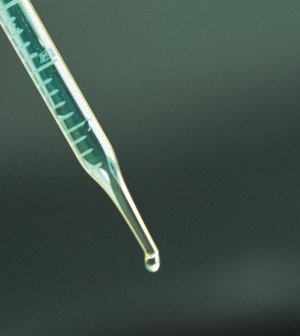- Skip Storing This Everyday Product in the Fridge Door
- Green Tea + B3 Pairing May Boost Brain Health
- Navigating Your Midlife Crisis: Embracing New Possibilities
- City Raccoons Showing Signs of Domestication
- Mapping the Exposome: Science Broadens Focus to Environmental Disease Triggers
- One Week Less on Social Media Linked to Better Mental Health
- Your Brain Changes in Stages as You Age, Study Finds
- Some Suicide Victims Show No Typical Warning Signs, Study Finds
- ByHeart Formula Faces Lawsuits After Babies Sickened With Botulism
- Switch to Vegan Diet Could Cut Your Greenhouse Gas Emissions in Half
Health Highlights: Dec. 1, 2016

Here are some of the latest health and medical news developments, compiled by the editors of HealthDay:
Improve Allergy Warnings on Food Products: Experts
Food allergy warning labels are confusing for consumers and need to be improved, experts say.
Phrases such as “Made in the same factory as peanuts” or ”May contain traces of tree nuts” do little to help people with food allergies understand the actual risk, according to a report from the U.S. National Academies of Sciences, Engineering and Medicine, the Associated Press reported.
The committee said regulators and the food industry need to improve the voluntary labels on food products about possible accidental contamination with food allergens.
Currently, “there’s not any real way for allergic consumers to evaluate risk,” committee member Stephen Taylor, a University of Nebraska food scientist, told the AP.
Research suggests that consumers might simply ignore the warnings, but that doing so is “essentially a form of playing Russian roulette with your food,” he said.
The Food and Drug Administration should replace “precautionary” labels with risk-based ones, the committee said.
That would mean determining a safety level for different allergens. Labeling based on that information would help consumers decide if they want to take a chance on a food or not, according to Taylor.
About 12 million Americans are believed to have food allergies, which can sometimes trigger fatal allergic reactions. But the actual number is unknown, and the committee said it’s crucial for government scientists to get an accurate figure, because that’s an important first step in determining if food allergies are on the rise and who’s most likely to be affected, the AP reported.
The committee also recommended: better informing new parents about allergy prevention; better training for first responders, restaurant staff and others about helping people avoid foods they’re allergic to, and how to treat severe allergic reactions with an injection of the drug epinephrine; and better education for health providers and the public about the differences between food allergies and other disorders that people sometimes mistake for allergies, such as lactose intolerance and gluten sensitivity.
The FDA is reviewing the report and is “particularly interested” in the science behind the committee’s labeling recommendations, spokeswoman Megan McSeveney told the AP.
The Grocery Manufacturers Association indicated support for new labeling.
High School Students Make Martin Shkreli’s Drug for Just $2 a Pill
A team of Australian high school students recreated the drug Daraprim for just $2 a pill in order to prove how cheap it is to make.
Last fall, U.S. biotech executive Martin Shkreli sparked outrage when he boosted the price of the drug by more than 4,000 percent, to $750 a pill. The drug is used to treat toxoplasmosis, which can be a life-threatening for pregnant women and people with weakened immune systems, such as those with HIV or AIDS, the Washington Post reported.
In Australia, 50 tablets of the drug can be bought for $13.
The 11th grade students spent about $15 on the ingredients required to produce 3.7 grams of Daraprim, about $100,000 worth of the drug in the U.S. market, according to Alice Williamson, a postdoctoral teaching fellow at the University of Sydney. She teamed up with the high school students and their science teachers.
There are no plans to sell the drug. Williams said the objective of the project was to send a message to drug companies — particularly those in the U.S. — that high drug prices are not always justified, the Post reported.
—–
New Discovery Means Much Less Sugar Needed in Chocolate
A newly-discovered way to structure sugar differently means 40 percent less sugar can be used in chocolate without affecting the taste, according to Nestle.
The Swiss company said it is patenting its breakthrough and in 2018 will start using the new sugar in its products, BBC News reported.
This change in the structure of sugar makes it dissolve more quickly, which fools the taste buds and raises the sweetness, Nestle said.
Currently, milk chocolate is about 50 percent sugar while dark chocolate can range from having no sugar to being 40 percent sugar, BBC News reported.
Copyright © 2025 HealthDay. All rights reserved.










